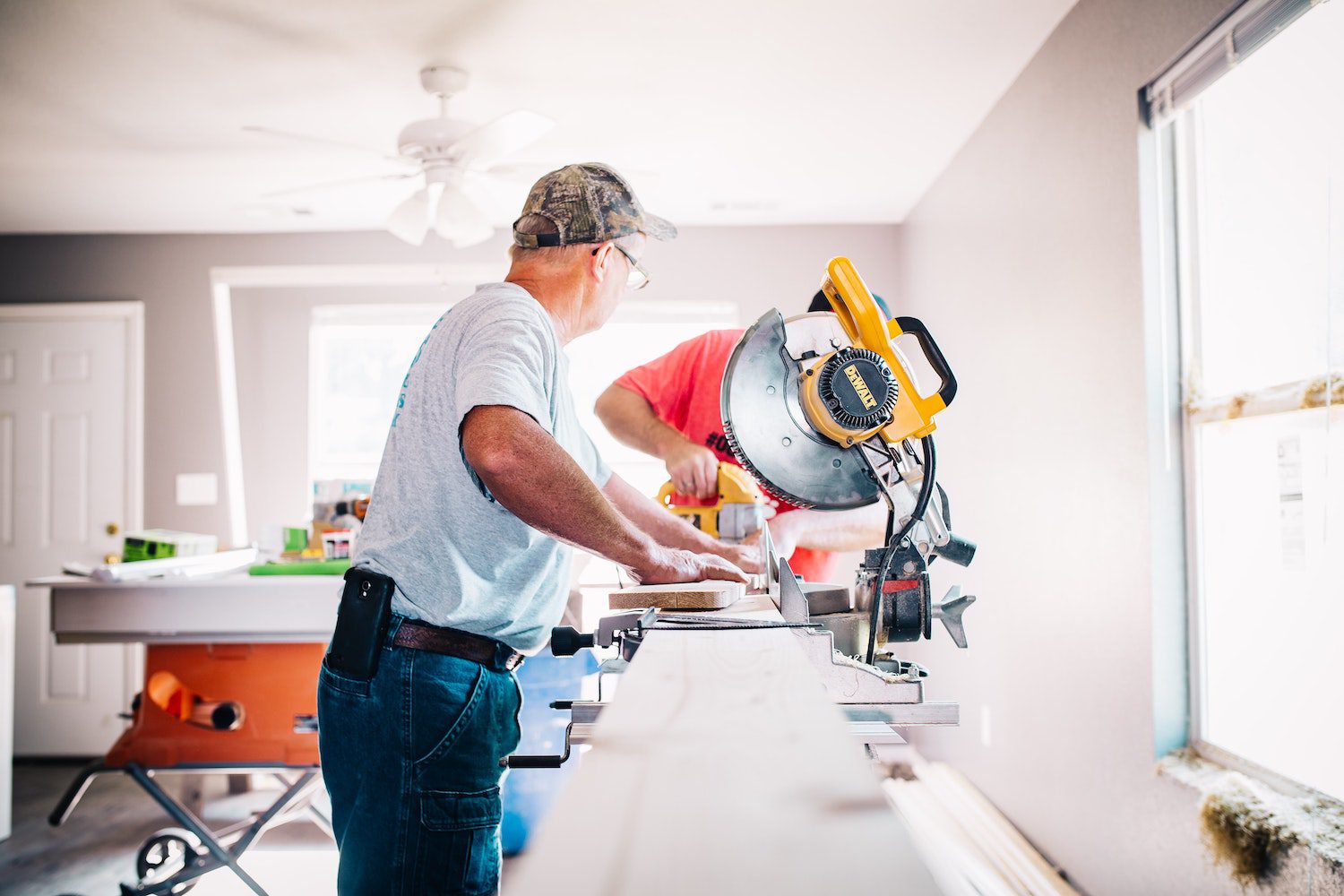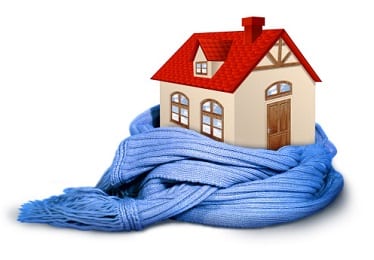Author: KP & Associates
Dec 20, 2016 / Blog
Happy Holidays | The Very Best for 2017

What a wonderful year 2016 was, and a banner year for real estate sales.
A huge thank you goes out to Team Karen Paul and of course our clients.
On behalf of everyone at Karen Paul & Associates and Keller Williams Edge Realty, we wish you a very happy holiday and look forward to serving you in 2017!
Karen Paul & Associates | Real Estate
905-333-6234 | karenpaul.com | info@karenpaul.com
Burlington • Oakville • Hamilton • Milton • Niagara
Free Home Evaluations | See Our Listings
Interested in learning more? Send us a message here and we’ll be in touch with you soon after.
Dec 12, 2016 / Your Home
LED: The Next Evolution in Lighting

This fall we listed a home that was using only LED lighting. I was absolutely fascinated and impressed, not just by the quality of the lighting but the role LED lighting was playing towards sustainability.
Since this is the time of holidays lights on our trees and in our homes (inside and out) it seemed prudent to blog about LED lighting.
Extremely cost-effective and energy efficient, LED lighting uses approximately 85% less energy than halogen or incandescent lighting. When you factor in a lifesapn of nearly 20+years, LED lighting can add up to significant savings on your hydro.
Those types of cost savings and efficencies are a plus when selling your home, and helps your real estate agent set your home apart from listings.
What’s The Big LED Deal?
An electrical current passes through semiconductor material, which illuminates the tiny light sources or Light Emitting Diodes (LEDs).
LED bulbs are measured in lumens – which is the amount of light produced. The more lumens in a light, the brighter the light.
Buying LED Bulbs
If you’re like me, you’re probably trying to translate LEDs into watts.
Contrary to common belief, the number of watts isn’t about brightness but how much energy the bulb draws. It’s the consumer that has learned to correlate watts with brightness, but for LEDs, watts won’t work because LEDs draw less energy.
Here’s a shopping guide comparing watts and lumens:
• 40-watt incandescent bulb = 450 lumens
• 60-watt incandescent bulb = 800 lumens
• 100-watt incandescent bulb = 1600 lumens
LEDs And Heat
LED lighting systems don’t radiate heat the same way as standard bulbs. Instead, heat produced from LEDs is drawn away by an absorbing device or heat sink that dissipates the heat into the environment.
Managing the heat is critical otherwise the light will degrade and have a shorter lifespan.
LEDs typically do not “burn out”. Instead, they experience lumen depreciation, where the amount of light produced decreases, the light colour gets dimmer or starts to flicker.
Choosing The Right LED Color
There is actually no “white” LED. To get a white light, different color LEDs (amber, red, green and blue) are mixed or covered with a phosphor (yellow material on some LED products) that converts the color of the light.
While standard bulbs provide a warm, yellowish hue, LEDs come in a wide range of colours including:
- warm or soft white that will produce a yellow hue close to incandescent
- bright white will produce a whiter light, closer to daylight and similar to what you see in retail stores.
Suddenly shopping for bulbs has become so much more interesting!
Dimmer Switches
LEDs are not always compatible with traditional dimming switches designed to work with incadenscent bulbs. Dimmers work by reducing the amount of electricity sent to the bulb to dims the light.
However, now you know that that there is no direct correlation between LED brightness and energy drawn.
If you’d like the LED lights to be dim either find LED bulbs compatible with traditional dimmers, or replace the current dimming switch with a LED-compatible dimmer.
A Little Pricey Upfront
When switching to LED bulbs, don’t expect to save immediately, instead consider it as an investment. Eventually, the LED bulbs will pay off, and in the meantime, enjoy less heat production, longer bulb life, and even the option of controlling them with your smartphone.
When getting your lights in order for this holiday season, consider LED lights – even if it means replacing a few strings.
Our team of real estate professionals always presents your home so that it retreives the highest dollar! Contact us Today!
Our team of real estate sales professionals is committed to finding you, your dream home. Whether you’re looking to buy or sell, the Karen Paul team is here to help with any questions.
Karen Paul & Associates | Real Estate
905-333-6234 | karenpaul.com | info@karenpaul.com
Burlington • Oakville • Hamilton • Milton • Niagara
Free Home Evaluations | See Our Listings
Article prepared with resources from: Home Hardware, CNET and Candace Lombardi
Interested in learning more? Send us a message here and we’ll be in touch with you soon after.
Nov 23, 2016 / Your Home
8 Tips: Make Sure Your Home Is Winter Ready
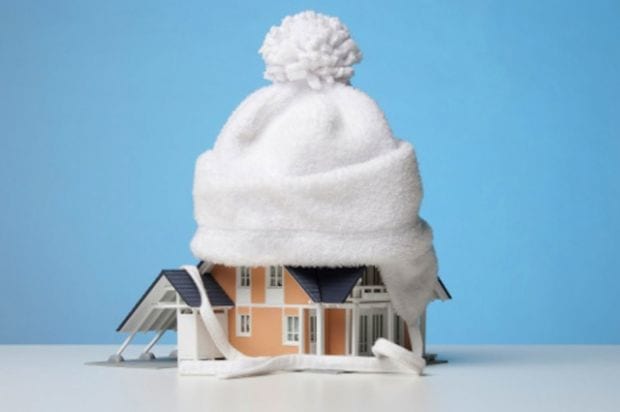
Doesn’t feel like it right now, but winter will be here sooner than we think.
And winter can be brutal on a home and your pocketbook. It’s important to protect your home from potential damage and address heat and energy leaks. Where to start?
The home inspection report from your home sale may have a few ideas, particular to your home. But generally speaking, these eight ‘winter chores’ should get your started, help you stay warm, safe and maybe saving a few bucks in energy costs this winter.
HVAC Maintenance:
Is your heating system ready? Have a professional check your HVAC system to ensure it’s in good working order before you turn it on. A typical service check includes cleaning and replacing the air filter, checking the furnace components (fans, pulleys), and all electrical connections.
If you haven’t already, replace the batteries in both the smoke and carbon monoxide detectors. Those are the appliances that will tell you if your heating system is overworking.
Update The Thermostat:
Many households shell out 50% of their energy budget on heating that no one ever uses.
Installing a programmable thermostat that can be operated via a SmartPhone means never having to worry about whether the heat is on when nobody is at home. Conversely, keep your family warm and cozy by remotely turning the heat on, half hour before the family arrives home.
An investment in a good thermostat could save you between 1 and 3 percent on your heating bills.
Reverse The Ceiling Fans:
If your ceiling fan has a reverse switch, use it to run the fan’s blades in a clockwise direction when the heat is on. The fan will produce an updraft and push down into the room heated air from the ceiling.
It might make enough of a difference to be able to turn down the thermostat by a degree or two for greater energy savings.
Seal The Drafts:
Drafts can waste 5 to 30 percent of your energy use and they can trip up your thermostat.
- Caulk Around Windows & Doors
If the gaps between the siding and window or door frames are bigger than the width of a quarter, it’s time to reapply exterior caulk. Silicone won’t shrink and tends to hold out best against the elements. - Insulate Larger Windows
Large sliding door/windows might require insulation, which is easy to do with a window insulation kits (available at hardware stores). Properly installed window plastic is almost invisible and not only stops the draft but the extra air space between the window and the plastic film boosts a home’s ability to hold the heat in. - Door Drafts
Remember the draft snake? A bath towel under a draft door will do, or using scrapes of fabric, neckties, or socks filled with kitty litter does the trick for drafty doors.
Insulate The Pipes:
A burst pipe is no fun! Tubular pipe insulation sleeves (available from most hardware stores) will cover exposed pipes in unheated areas (basement, attic or even a small crawl space). It’s as simple as: Cut to fit, wrap the entire pipe including joints and elbows fasten with duct tape.
Clean-out The Gutters:
Clogged gutters can prevent rain and melting snow from draining and result in home leaks or damage to the landscape and foundation. Gutters need to be clear of everything, from twigs to leaves to caked-on dirt. Also check that the downpipes (by running water through them) to make sure they are clear of any obstruction.
‘Fall-Clean’ The Garage:
Push all your summer equipment from the lawn-mower, hedge trimmer, rakes and summer toys?to the back and make all of any winter necessities?shovels, snow blowers, skis and sleds – and the salt. ?accessible.
Prep For A Winter Storm:
It’s happened. A blizzard knocks out power for several days. So be prepared with a fully-equipped emergency kit that includes: batteries, a flashlight, candles, matches and a lighter; warm clothes and blankets; a battery-powered radio; non-perishable food items and water; a first-aid kit and specialty products like medicine, baby formula and pet food (if necessary). We could be without power for several days!
Have a question about how to winterize your home, give me a call. If my real estate team doesn’t have the answer, we sure know who to refer you to!
Our team of real estate sales professionals is committed to finding you, your dream home. Whether you’re looking to buy or sell, the Karen Paul team is here to help with any questions.
Karen Paul & Associates | Real Estate
905-333-6234 | karenpaul.com | info@karenpaul.com
Burlington • Oakville • Hamilton • Milton • Niagara
Free Home Evaluations | See Our Listings
Credit to posts by Style at Home & Popular Mechanics
Interested in learning more? Send us a message here and we’ll be in touch with you soon after.
Nov 10, 2016 / Buying
Joint home ownership: What you need to know.
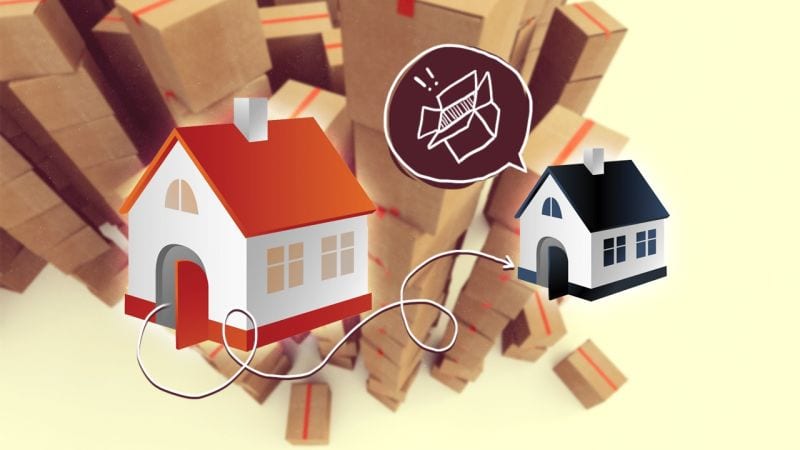
Co-ownership or joint ownership, isn’t a new idea. But with housing prices on the rise, joint home ownership is proving to be an affordable option for many new home buyers and families.
There are many reasons to consider jointly owning a home. Beyond affordability, people can enter a joint housing agreement to maintain a certain lifestyle; not to live alone, or hope that by combining resources they can live a little more ‘upscale’.
Sharing the financial load (the deposit, mortgage payments, monthly expenses and fees) can be a huge help. And while sharing the financial responsibility, joint ownership helps build home equity.
While there are many pros to sharing a home-purchase it does require sober second thought and asking good questions.
As an experienced real estate agent, the best piece of advice I can provide is to hire an experienced lawyer that will draw up a cohabitation agreement. Think of it as a pre-nuptial agreement where both parties are protected.
Co-ownership agreements can be as loose or as detailed as the owners need, covering contingency plans such as one owner getting sick to what happens if there is an unexpected flood. A detailed agreement can layout the decision-making process for resolving maintenance disputes to guidelines on potential irritants like noise, parties, guests, cleanliness and of course pets.
A well written cohabitation agreement will cover the following critical areas:
- Type of ownership such as Tenants-in Common. Whatever the choice, all owners need to be listed on the Title.
- Expenses – On-going (hydro, water, insurance) and unexpected (general and major home repairs) expenses should be itemized. It should also clarify the amounts paid by either party for the down payment and who pays what portion of the mortgage, real estate taxes and home repairs.
- An exit plan. What if one owner passes away, is relocated to a new city, gets married, or is ready to fly solo? Will the other joint-owner now become the sole owner, or do they need to buy out the heirs? A lawyer may also recommend purchasing life insurance on each joint owner as a way to pay off the mortgage in case of death.
All this requires some serious and transparent discussion between all parties and the sharing of intimate financial information. And I would recommend hammering that out before looking for a new home or finding a lawyer. It always pays to do your homework.
Since obtaining a mortgage is key to purchasing a home, looking for a independent mortgage agent might be advantageous.
Here are some items to discuss and how they can impact your agreement:
- The mortgage rate could be tied to both credit reports. One person’s bad credit rating could negatively affect the mortgage terms or even the interest rate on the loan.
- Since both parties are listed on the mortgage, that makes both responsible for making payments – on time in full each month. If one party falls behind, you could both be reported to a credit agency for non-payment.
- Even with an equal split on the monthly mortgage payment, a lender sees it differently as if entire mortgage payment each month is yours alone. This can increase the debt-to-income ratio higher and make it difficult for qualifying for other loans.
- Exit planning on a mortgage doesn’t hurt. If one party wants out of the deal, removing names from the mortgage, requires selling the home or refinancing the loan under a single name.
There are many wonderful joint ownership success stories. And it pays to be realistic as to how long you want to share jointly. Situations change. So consider giving your agreement a tentative ‘renewal date’ – to allow each owner flexibility to do something else or re-new the current situation.
Home ownership without carrying the sole burden of all the costs can prove a huge boon. As your realtor, we’re here to help you navigate all of the options of home ownership.
If joint-ownership is on your horizon, contact us today and let’s get started!
Our team of real estate sales professionals is committed to finding you, your dream home. Whether you’re looking to buy or sell, the Karen Paul team is here to help with any questions.
Credit to posts by Investopedia & Money Crashers.
Interested in learning more? Send us a message here and we’ll be in touch with you soon after.
Oct 19, 2016 / Your Home
Tips To Winterize Your Home: Furnace Maintenance
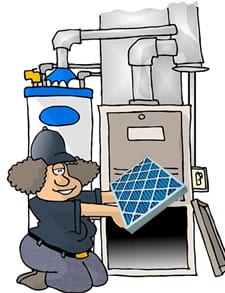
While regular furnace cleaning and maintenance helps to prevent problems, it also keeps your furnace operating efficiently. An efficient furnace reduces energy waste and means lower utility bills.
ClimateCare is Canada’s largest network of independent heating, ventilation and air conditioning (HVAC) systems contractors, and they were kind enough to share this information with us.
How can you be sure your furnace needs repairs?
Homeowners should be checking the furnace filter on a regular basis, and changing it monthly during the winter. Not only will it keep the air clean, but will also reduce energy costs. But how does one know if the furnace needs repairs?
- If it’s cold in your home even though the furnace is set to a toasty warm level, your furnace probably needs repairs.
- If you hear a strange sound coming from the furnace, be it a rattle, a squeal or an out-of-place hum, your furnace probably needs repairs.
- If the temperature in your bedroom is sharply different from the temperature in your children’s bedrooms, your furnace probably needs repairs.
- If the furnace turns on and off repeatedly without reaching the desired temperature in the home, your furnace probably needs repairs.
- If you are being proactive definitely call us for a maintenance service call before these problems arise!
Is it OK to skip furnace maintenance?
Some homeowners don’t think long about the consequences of skipping furnace maintenance. Most likely a furnace will be fine for another year, unless of course it’s not. Problems develop for all kinds of reasons.
Early detection is the key, and an annual furnace check-up will identify little problems before they become disasters. If you compare it to ‘oil changes for your car’ regular maintenance from a qualified HVAC technician goes a long way to extending the life of your furnace.
What can go wrong?
- POISONOUS AIR FLOW: One of the most extreme consequences of skipping annual maintenance is the risk for carbon monoxide poisoning.While completely preventable, more than a thousand people die every year from it CO2 poisoning.
It is a colorless, odorless and tasteless gas that is present when fuel burns in places like your gas furnace or fireplace.
And to make sure your family is protected in the event of a problem with your furnace, always make sure you have a working carbon monoxide alarm in the house. - Debris Build-up: Not toxic, but not good either. Skipping furnace maintenance (and the equipment inspection that comes with actual maintenance tasks) leaves debris to build up throughout the HVAC system.
It doesn’t take long for the filter to become clogged with dust, dirt and debris, reducing airflow, air quality and making your system work harder than it should.
Once your air filter is no longer capable of keeping allergens and particles out, the furnace itself, along with the air ducts and registers, become coated with nasty airborne particles. And if they’re in the ducts, they’re in your lungs. - Uncomfortable drafts: Annual maintenance helps your furnace maintain consistent airflow and heat distribution throughout the house. Every time you skip a maintenance cycle, the cold spots in your home become more noticeable.
Cold spots signal stagnant air, and stagnant air can lead to mould behind the paint or wallpaper on your walls and cracking of perishable materials like caulk around windows.
To combat this, you’ll crank up the thermostat. Your bills will snowball and drain the bank account faster than you expect.
What’s included in most Furnace Maintenance Plans?
- Clean or replace furnace air filter
- Clean furnace components, including blower assembly, fans, pulleys and belts
- Check electrical connections & wires; pipe fittings & gas supply line; heat exchanger for cracks or corrosion
- Perform a 26 point furnace maintenance system inspection
A well maintained furnace can last up to a quarter of a century, but while regular maintenance is the best way to prolong the life of any home appliance, it isn’t a guarantee your furnace will never have a breakdown.
We would be thrilled to provide you with information that will enhance your home living experience.
Our team of real estate sales professionals is committed to finding you, your dream home.
Whether you’re looking to buy or sell, the Karen Paul team is here to help with any questions.
Note: If you have been approached by door-to-door furnace salesman, contact HRAI Canada for more information.
With thanks to Climate Care for the information.
Interested in learning more? Send us a message here and we’ll be in touch with you soon after.
Oct 6, 2016 / Your Home
Pedro Giorgana Talks Thermal Home Inspections

It’s always been my view as a realtor, that every real estate sales transaction is better with a completed home inspection. Our job as realtors is to verify the facts such as lot sizes and taxes, but to ‘lift the veil’ on a home, you really need a home inspection.
Home inspections need to be completed by a certified, insured and in my opinion experienced home inspector. Ideally home inspectors that focus in a single community are also familiar with and look for similar issues in neighbourhood homes built in the same era.
The home inspection is usually the responsibility of the home buyer. However, it’s not uncommon, particularly in hot markets, that a seller will have a home inspection completed prior to listing, so not to impedge a sale. I’ve even been to open houses, where the home inspector has been on hand to answer any buyer questions, although that’s rare.
I like to closely follow the technological advances or disruptions in real estate and related industries. So, I was intrigued when I received this article from Pedro Giorgana on the role Thermal Imaging is playing home inspections. Pedro agreed to be one of our guest bloggers and I am pleased to be reprinting his article ‘How A Thermal Imaging Home Inspection Can Make a Difference’.
____________________________
Pedro Giorgana is a fully certified and insured home inspector offering a complete range of building and home inspection services, including thermal imaging. Pedro can be reached at 289-928-5689 | pedro.giorgana@inspechomes.com |InspecHomes
How A Thermal Imaging Home Inspection Can Make a Difference
More and more home buyers are requesting a thermal imaging home inspection for their potential properties. Thermal imaging home inspections have become very popular because they are non-invasive and make locating problems within a home much easier.
Thermal imaging also allows the home buyer to actually see the shape and size of the problem, rather than simply learning that it’s there! It not only saves the home buyer and realtor from dealing with unforeseen issues down the road, but peace of mind and security about the home being purchased.
What can a thermal imaging home inspection find in a home?
Water Leakage
Exterior water leakage can cause serious problems in a home. A thermal imaging home inspection can reveal wet areas that may otherwise be hidden from normal view. Stopping this problem before it gets worse is very important. An exterior water leak that is allowed to continue can cause rot in wood and other materials as well as lead to mould growth.
Points of Lost Energy
A thermal imaging home inspection can also identify areas in a home, that if repaired, could help reduce utility bills.
Missing insulation or un-insulated walls can lead to a loss of hot or cool air during heating and cooling seasons. This can lead to higher utility bills as a home’s furnace or air conditioning unit tries to make up for the loss.
Pipe Leaks in a Home
Not all pipe leaks start out as a noticeable issue. The thermal imaging home inspection can reveal a leaky pipe, even if the leak is still small. Correcting the problem right away is very important to prevent serious water damage situation later. Thermal imaging can identify the origin of a leak, saving a plumber time on the repair.
Electrical Components Overheating
Overheating electrical components can pose a serious threat to the safety of a home and its inhabitants. A thermal imaging home inspection can identify problem areas that could come from overheating electrical components before they turn into an emergency situation. Although any home can benefit from a thermal imaging home inspection, older homes with aging electrical components and wiring may get even more out of the service.
If you have questions on real estate transactions or home inspections, I would be thrilled to answer your questions.
Our team of real estate sales professionals is committed to finding you, your dream home. Whether you’re looking to buy or sell, the Karen Paul team is here to help with any questions.
Interested in learning more? Send us a message here and we’ll be in touch with you soon after.
Sep 29, 2016 / Community
4 Tips to hosting Thanksgiving dinner with ease

Hosting Thanksgiving dinner, is usually the warm-up to the big event – Christmas dinner.
But it seems to me that the whole point of having the entire family over for a big event, is to be able to enjoy it with them. It’s not fun hosting a big family dinner only to be totally run off your feet trying to address the whims of every guest.
Having hosted many of these types of occasions, I learned in short order to make sure the host plays too. And that means: Simplifying and Setting Limits. Just because someone got the great idea to start a marathon family Monopoly game 5-minutes before dinner, doesn’t mean it should happen.
When I plan large family feasts, I like to picture ‘The Order of Good Cheer’, (photo below) the first winter feast of Champlain and his men in Port Royal, Nova Scotia.
Whether I am hosting or not, I love pouring over cooking magazines, when I’m not checking out real estate magazines.
And this month of course, most Canadian magazines are sharing their ideas on prepping for the BIG Thanksgiving dinner. Some ideas were pretty interesting and maybe not so new, others were just plain smart and those are the ones that I’ve listed here. I hope you find them useful.
FOUR hacks or tips for hosting a this years’s Thanksgiving Family
extravaganza with ease and grace.
Make Dessert – Potluck
Best idea for 2016! I’m sorry that I never thought of it earlier.
Not only can the entire family help out but you can easily slip-in store bought goodies with Aunt Martha’s pumpkin pie. If everyone brings a desert and that includes ice cream for the kids, that’s half the meal done. And think of it – absolutely no organizing.
Expanding on the potluck idea, set up a dedicated dessert table in another room complete with dishes, cutlery and extra serviettes (maybe paper). That way you don’t have to clear the main table before the next course.
Have an Emergency Stain Fighter’s Kit On Hand
What a great idea. Talk about being prepared.
When a spill happens and it will, instead of racing around for cleaners or shouting orders, have a spill toolkit ready with salt, wine away, club soda and a couple of rags, strategically placed so that someone can grab it.
More cleaning thoughts.
I never understood the necessity of having a deep clean before guests arrive. Yes, if you are having guests stay overnight, but let’s be honest, if you’re having a hoard of guests for dinner, you’ll probably need to clean afterwards.
De-cluttering and removing valuables and breakables is a must. In fact, I schedule my annual day to de-clutter the hall closet just before big family events. At the same time I make sure there are lots of hangers and extra pairs of inexpensive slippers in case it’s really rainy or dirty and people take off their shoes.
Get those helper’s organized with a list
Give-in to the do-gooders – they want to help. Much as you don’t want help, there are always those that want to be involved rather than visit with family.
So create a to-do list ahead of time to keep them at bay. They can keep tabs on the refreshments, get appetizers ready and anything else that will free you up from being chained to the stove.
KISS.. simplify everything
It’s oh so easy to fall into the trap, it wouldn’t be Thanksgiving if we didn’t have ……. Trust me, I’ve had plenty of Thanksgiving’s with missing elements and they were wonderful.
If something is really, truly important, then asking someone else to prepare it is the best option. Or, going store-bought – because no one will remember it the following year. Gravy is probably the best example of store-bought goods doing their job.
Who still makes gravy from scratch? It’s easier to experiment with the multitude of different gravy mixes and see what works best for your family. Gravy is one of those items that is judged because it’s been missed, not because it’s from a can.
_________________________
It’s not always easy for a large family to get together AND all get along. By preparing ahead, simplifying, focusing on the positive and steering clear of hot button issues, you’ll be able to enjoy Thanksgiving with your family.
On behalf of the Karen Paul & Associates real estate team, I’d like to wish you and your family a very Happy Thanksgiving long weekend!
Our team of real estate sales professionals is committed to finding you, your dream home. Whether you’re looking to buy or sell, the Karen Paul team is here to help with any questions.
Credit to posts by Kitchn, Moore Maguire Real Estate Group, Canadian Living & Chatelaine
Photo credit: ‘The Order of Good Cheer’ Nova Scotia 1606 | by Charles William Jefferys (1942)
Interested in learning more? Send us a message here and we’ll be in touch with you soon after.
Sep 21, 2016 / Selling
7 Helpful tips to Downsize Your Own Home

Getting ready to downsize? We’re here to help. As real estate agents, not only do we chat about downsizing, but we’ve experienced it before with many of our clients. And after 35 years of real estate transactions, that’s a lot of downsizing.
The biggest thing I can say about downsizing is that attitude counts – that’s positive by the way. Whether you are doing your own home, or assisting an elderly relative, having a positive attitude that you’re starting a new adventure, or saving a few bucks so you can travel more – will make the job a whole lot easier.
There’s a lot of information and tips on downsizing, including my recent post: 4 Tips: Make Downsizing Someone’s Home Easier, for people who are downsizing their parent’s home.
For this post I asked my real estate team “If you had to downsize your home tomorrow what are the top 5 things that you would do first” – we came up with 7.
Just like David Letterman – here’s our top 7 downsizing list:
#1: Take stock.
Before you do anything—even before you know how much space you are moving into, take an inventory of ALL your belongings. As you start to list the items, ask yourself, “if this was lost in a fire, would you replace it?”
At the end of this exercise, you’ll not only have a list but a sense of what is actually important to you – what are the things that you simply couldn’t live without, and what could be replaced as you downsize to your new living space.
#2: There is no good time.
Trust me. Don’t wait for a good time to begin. Certainly don’t wait for family members to offer assistance.
Don’t’ plan, organize or worry – just jump in. Try not to measure the progress or set time limits – all change is an improvement.
‘Thinning out’ is a great place to start. One morning a week tackle a closet or overflowing filing cabinet, your photos or books.
#3: Get some experience with non-emotional rooms.
Books, photos and paintings are emotional. Steak knives and mixing bowls aren’t.
The kitchen is a great room to start, no one needs 10 mixing bowls. Having a creative strategy is really helpful. One client of mine created kitchen-starter kits for all her grandchildren and neighbours children that were moving to their own new digs.
If downsizing to a condo, working through the garage should be the virtually the same. No one sheds tears for having to get rid of their snow blower, lawn mowers or ladders. And these are items that sell well on classified websites or community Buy and Sell Facebook pages.
And the person who comes to purchase your snow blower, might also be interested in other garage items. There may enough tools and extra gardening equipment to add to the kitchen-starter kits for the youngsters.
#4: Size matters.
Very few people can truly picture what a 13’X13’ room looks like.
With the measurements for the new place – take the next step to really get a feel for the new room. That means walking into rooms in your present home with similar dimensions and imaging whether or not two sofas will actually fit in that room.
Yes, you can block it out on a furniture map, but there’s nothing like seeing it for real yourself.
I’ve even recommended to empty a room and fill the same space with the furniture intended for the new location. It’s often a reality check – that something has to go.
#5: Use garbage as the last resort.
Beyond recycling, reusing, selling, donating or gifting items to relatives, this is your time to really become creative in disposing of your treasures. I thought these ideas were pretty inventive.
- Most charities don’t want non-working Christmas lights and old TVs. Having said that, there are Repair Cafes, or community teaching organizations that are eager to repair your broken items and resell them.
- Every dry cleaner will accept your hangers with glee. Small amounts of cleaning supplies can be donated your cleaning lady who is definitely going to use them.
- Some local libraries will accept used books for their foundation fundraising efforts.
- In some communities, setting items on the curb with a sign that says “Free! Help yourself!” will make items miraculously disappear. I’ve even picked up some curb-side treasures.
#6: Banish the ‘Maybe’ pile
Label three bins To Keep, To Sell and Charity. Don’t even think of starting a maybe pile. If you haven’t decided where it fits, that’s one thing, but to put it in a maybe pile just postpones the decision.
Not allowing yourself the option of storage at a relatives, or even a locker really helps force decisions.
#7: Just be nice.
And finally, if you are downsizing for two, be nice to each other. Downsizing is an emotional experience and two people don’t always agree – that’s just natural.
If your partner is having difficulty, start with your own stuff and lead by example.
Another suggestion I often make is that each person make a list of items they love and simply can’t live without. You may be pleasantly surprised how many items overlap and that very little horse trading is required.
You can’t take it all with you, so having a list helps objectify things. Hiring a professional company can also be helpful. Not only will they provide an objective opinion but will save you from moving that 1970s sewing machine!
We would be thrilled to work with you and help you downsize your home. Contact us Today!
Our team of real estate sales professionals is committed to finding you, your dream home. Whether you’re looking to buy or sell, the Karen Paul team is here to help with any questions.
Interested in learning more? Send us a message here and we’ll be in touch with you soon after.
Sep 15, 2016 / Your Home
4 Tips: Make Downsizing Someone’s Home Easier

Downsizing.
Even the word sounds negative. But it doesn’t have to be a horrible experience, in fact framed as working towards a new adventure, saving money or having less upkeep can keep the downsizing process on the move.
Whatever your reasons (buying or selling the family home) for moving or downsizing, attitude counts. And the more upbeat you are, the more help you’ll garner and the smoother things will go.
As real estate agents, we chat a lot about downsizing. And for many clients with aging relatives, downsizing has become an important topic. In fact, it’s such a big topic, that I’ve divided the topic into two different posts.
In this post, I will share ideas and tips for downsizing someone else’s home whether it’s your elderly parents, aging neighbours or favourite aunt. In the next post, my real estate team and I share our hacks for downsizing your own home.
When it comes to downsizing, if you’re worried that you don’t know where to start, don’t worry, we do!
How to help someone downsize their home.
Allow lots of time
Whatever else, be prepared to dedicate some time to the process.
I agree it’s far more efficient to plough through the house in one go, but that can be both physically and emotionally stressful for everyone involved. If it’s a senior’s space you are downsizing, think months, not days.
Start by tackling one room (like the kitchen) or one project (like photos) at a time. Two-hour stretches is ideal, probably for you too. Keep in mind that your work doesn’t end after a two-hour sort. There’s the packing, tossing out and taking away element of downsizing as well.
Ask questions that require Y/N answers
Taking a moment to properly frame your questions so they require yes or no answers are much easier to manage then open ended questions. Dialogue along the lines of:
‘ I’ve got your best frying pan, a large pot and your kettle together, how does that sound?’ or
‘ I went through your scarf drawer and chose the 5 that I think suit you the best’
is easier to manage over: “Which one of these do you want to keep?”
For many of us the newest and shiniest isn’t necessarily the favourite and the one used daily. What may seem old and useless could be the source of comfort and therefore worth moving, such as my favourite coffee mug, which I’m never letting out of my sight.
By handing a sense of control over the family member who is ultimately the decision maker, you are putting them in the driver’s seat and quite possibly making it easier for them to give away more things.
Breaking through the sentimentality
Getting rid of sentimental treasures can make for difficult conversations.
But you can help your senior decide what’s really meaningful by asking them:
“If you could take only 3 pieces of artwork or 10 books which would they be?”
That helps identify which ones are more meaningful. The chosen ones you can take, the others then become negotiable.
Photos, memorabilia and collections take up a lot of space and need to be culled.
Begin by getting the story behind the objects (where did it come from, when was it last used) and make sure it’s noted and that the story follows to the next person who uses it. This allows the importance of the memento to carry forward.
It’s hard to enjoy sealed boxes of photos. Having them digitized and organized into albums is really affordable. Albums or books can centre around themes, events, or a book dedicated to each family segment. Sorting and organizing photos into groups might be something that can be delegated to another family member.
Keeping an album of paintings is also an alternative. I agree that having photos of paintings, isn’t the same as owning, but it’s a space saving way to continue enjoying without owning.
Let the legacy start today
If an item is meant to be a gift, encourage giving it now rather than the next milestone. Suggest that your relatives enjoy the feeling of giving right now with the benefit of seeing others enjoy what they hold in high regard.
And if it’s simply too much, hire a professional. There are many agencies that will make your downsizing experience a smooth transition. Connecting you with moving services, is part of helping you sell your home. Sharing information is what real estate agents do best!
If you would like more information on downsizing, we would be thrilled to work with you. Contact us Today!
Our team of real estate sales professionals is committed to finding you, your dream home. Whether you’re looking to buy or sell, the Karen Paul team is here to help with any questions.
Interested in learning more? Send us a message here and we’ll be in touch with you soon after.
Sep 8, 2016 / Your Home
Hacks To Prep Your Home for Back-to-School

Someone should declare ‘Back-to-School’ a season.
After a summer of fun and frolic, everyone thinks of September as back down to business, whether it’s back to the gym or art class.
For families, ‘back-to-school’ is a really busy time. And making sure your home is physically well organized can make a difference.
Realtors love houses and we are always looking other homes, magazines and online for new tips and ideas that we can share with our clients.
Sometimes a minor improvement can make all the difference.
Our team of real estate agents, did some research and brainstorming on back-to-school and came up with these hacks – on getting your home ready for back-to-school.
We hope you find one or two useful.
Hack#1:
Go beyond the standard calendar – go for an entire wall
At the centre of every family is a calendar, where all the important and maybe not so important events and dates are noted.
Step back a moment, and think about expanding the family calendar to include a message board and enlarge it so that it covers an entire wall. Think of it, a message wall will not only help keep the family organized but provide a space for everyone to share what’s going on in their lives.
Consider dedicating an entire wall in a high traffic area. Cover it with magnetized panels, cork or peg board so that it can house not just the family calendar but important artwork, celebrations of homework awards, birthday invitations, school photos – and everything else that says this is a busy family.
This may also be the best place to create an individual file folder or shelf for each family member for the important papers, such as signed permission forms or lunch money.
Hack #2:
Create a physical space called the Homework Zone
As kids enter the higher academic years, providing a proper set-up in their bedroom makes sense. They need a dedicated quiet space away from the family din to study.
But in the early years, creating a Homework Zone, perhaps close to the kitchen, where kids gravitate anyway, allows you to supervise, pause for a question, practice for a spelling test, while getting on with family chores.
Stocking it with pens, pencils, magazine files, calculators, and loose paper will eliminate ‘search parties’ and help keep the kids focused. Adding pegboard to the walls will create extra storage for the not-so-often used things like paintbrushes, markers, glue and all the glitter stuff.
A homework zone will cut down on clutter in the house and make schoolwork easy to find – theoretically.
Hack #3:
Don’t have a mudroom? Build your own.
The glorious mudroom. If you can’t dedicate a separate room at the front or back of the house try carving some space in your home that can service as one. Even removing the doors from a closet will do the trick.
Provide individual spaces (cubbies if you will) for every family member. This is for knapsacks, jackets, sports and music equipment.
Adding bins, baskets, and lots of hooks will help keep things organized under the assumption that things will be put in their spot, if there is a place for it.
Hack #4:
Establish a dedicated lunch-packing station
Designate an area in your kitchen for all your lunch packing supplies. It can be a drawer, cabinet, or even a cart. Stock up on bags and containers, napkins, plastic silverware, condiment packets, wet wipes and maybe even a few pre-packaged snacks, including breakfast granola bars for those really busy mornings.
If you’re a family that uses containers consider assigning a different colour to each family member. It helps to keep things organized, accommodates for allergies or food preferences, and bonus for most parents, allows them to track who ate what for lunch.
And finally, give yourself some time to get into the swing of things. Organizing experts suggest that families need the entire month of September to ease into back to school – because after all – it’s not just school, it’s back to everything else as well, including regular mealtimes.
Strapped for ideas? Have you looked at Pinterest? It’s a wonderful social media platform full of great ideas and solutions or hacks that don’t require buckets of money.
Is your family going back-to-school? Are you looking for ideas on how to make your home structurally more organized?
Give me a call, I’m always very happy to help out.
Our team of real estate sales professionals is committed to finding you, your dream home. Whether you’re looking to buy or sell, the Karen Paul team is here to help with any questions.
Interested in learning more? Send us a message here and we’ll be in touch with you soon after.










